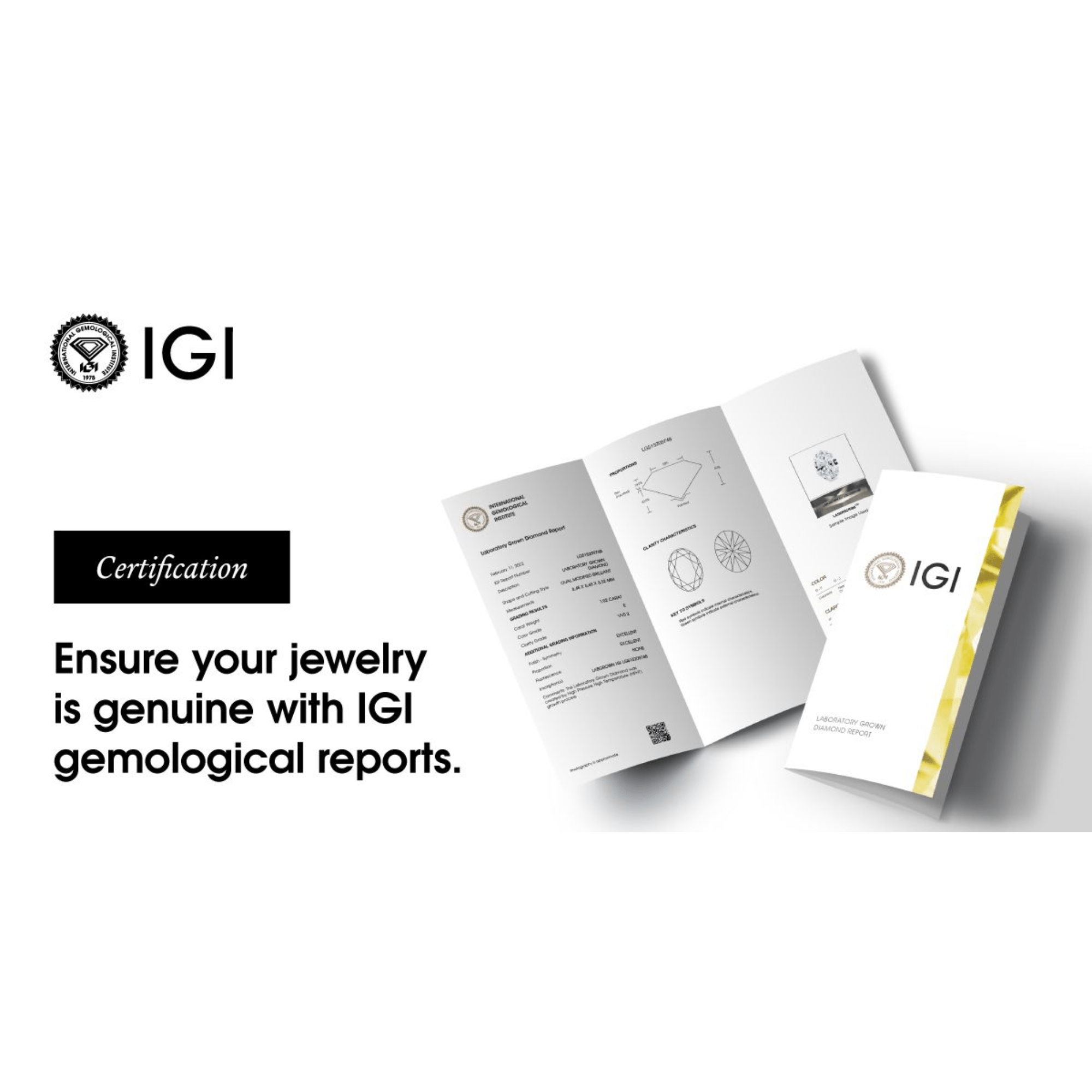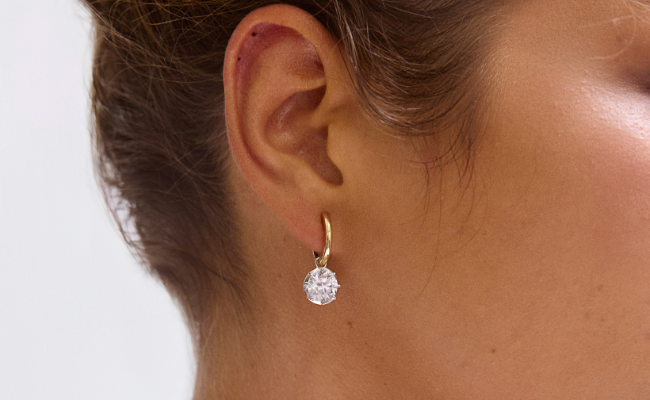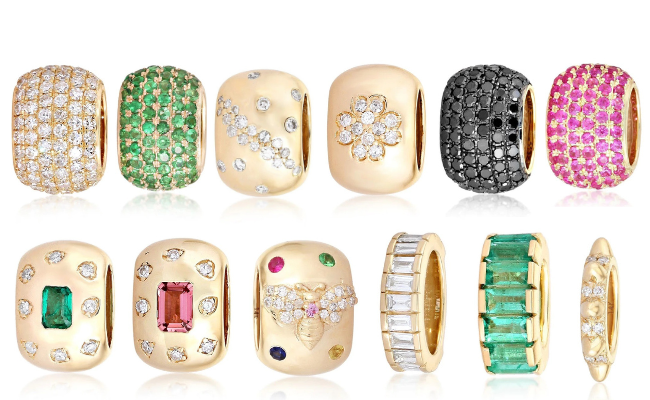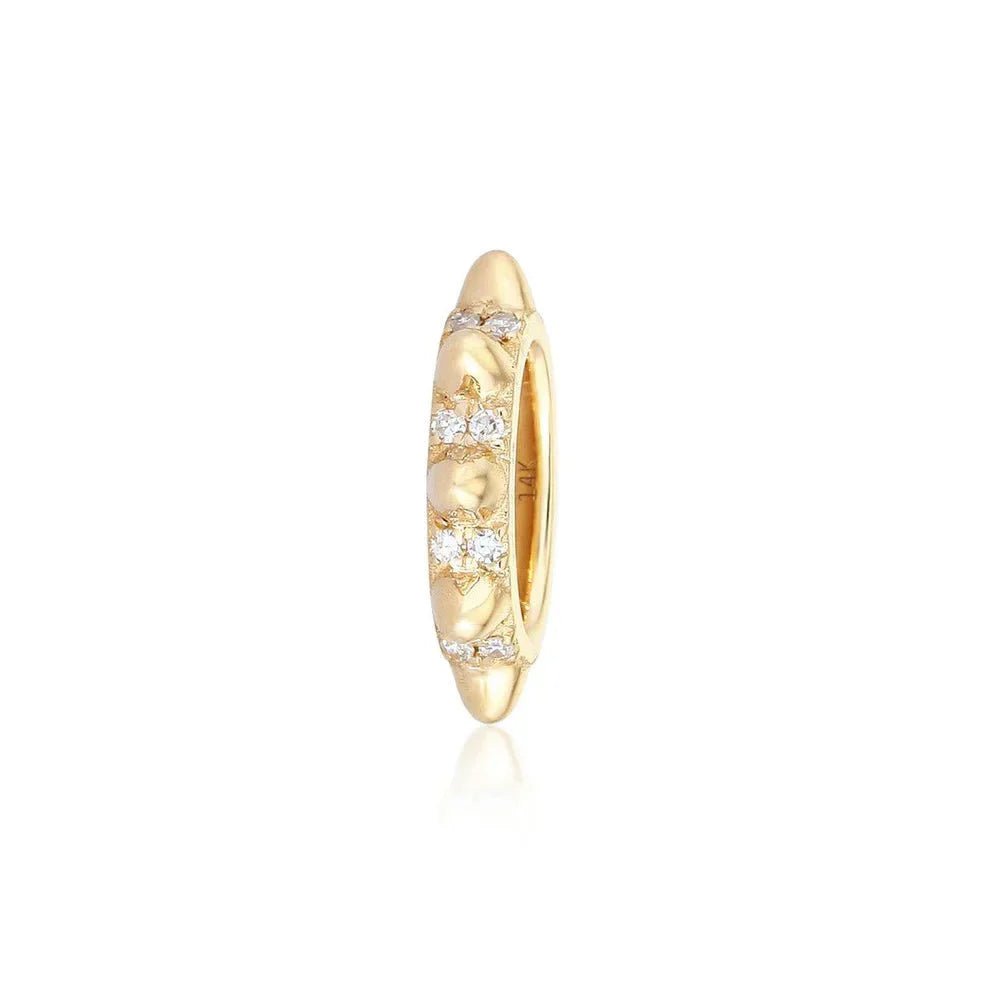Article: Decoding Lab Grown Diamond Certifications: What IGI Means for Your Purchase

Decoding Lab Grown Diamond Certifications: What IGI Means for Your Purchase
The world of diamonds has always been captivating, synonymous with beauty, luxury, and everlasting commitment. For generations, the allure of natural diamonds has held sway, but in recent years, a revolutionary alternative has emerged: lab-grown diamonds. These dazzling gems, identical in their chemical, physical, and optical properties to their mined counterparts, offer a sustainable, ethical, and often more accessible path to owning exquisite jewelry.
As the popularity of lab-grown diamonds soars, so does the need for clear, reliable, and trustworthy certification. Just as with natural diamonds, a third-party grading report is essential to verify a lab-grown diamond's quality and characteristics. Among the leading names in gemological certification for lab-grown diamonds, the International Gemological Institute, or IGI, stands out as a global authority.
But what exactly does an IGI certification mean for your lab-grown diamond purchase? Why is it so important, and how can you, as a discerning buyer, confidently decode the information presented on an IGI report? At Nolita Diamonds, we believe in empowering our customers with knowledge, ensuring every purchase is made with complete understanding and peace of mind. Let's delve deep into the world of IGI lab-grown diamond certifications.
The Essence of Certification: Why It Matters for Lab-Grown Diamonds
Imagine buying a car without knowing its make, model, or even if it runs. Unthinkable, right? The same principle applies to diamonds, especially lab-grown ones. While they are real diamonds, their creation in a controlled laboratory environment necessitates a clear, independent verification of their quality. This is where diamond certification comes in.
A diamond grading report, often called a diamond certificate, is a comprehensive document issued by an independent gemological laboratory. Its purpose is to provide an unbiased assessment of a diamond's unique characteristics. For lab-grown diamonds, certification is even more critical because:
-
Quality Assurance: It confirms that the diamond meets specific industry standards for quality. Without it, you’d be relying solely on the seller’s word, which isn't advisable for such a significant investment.
-
Transparency: A detailed report ensures you know exactly what you're paying for. It eliminates ambiguity and provides a clear, objective analysis of the diamond's properties.
-
Value Determination: The documented characteristics directly influence a diamond's market value. A certified diamond allows for fair pricing based on its attributes.
-
Comparison and Selection: Certificates enable you to compare different diamonds objectively, empowering you to make an informed decision that aligns with your preferences and budget.
-
Confidence and Trust: An independent third-party assessment instills confidence in your purchase, assuring you of the diamond's authenticity and stated quality.
-
Resale and Insurance: Should you ever need to resell your diamond or insure it, the certification provides concrete proof of its quality and characteristics.
IGI: A Pillar in Lab-Grown Diamond Grading
The International Gemological Institute (IGI) was established in 1975 and has since grown into the world's largest independent gemological laboratory. With over 20 locations globally, IGI has played a pivotal role in shaping the standards for diamond and gemstone grading. Crucially, IGI was the first gemological laboratory to achieve ISO accreditation in both natural and lab-grown diamond grading, signifying its commitment to rigorous quality control and continuous improvement.
What sets IGI apart, especially in the realm of lab-grown diamonds, is its proactive and comprehensive approach. They were instrumental in addressing the influx of lab-grown diamonds into the market, developing efficient and cost-effective screening services for both loose stones and finished jewelry. Today, IGI screens millions of diamonds annually, distinguishing natural from lab-grown and providing detailed reports. Their expertise and dedication have positioned them as a leading authority and the most recognized lab for grading synthetic diamonds.
Unlike some other labs that primarily focus on single stone evaluations, IGI has carved out a significant niche in the lab-grown market, offering screening services for melee (small accent) diamonds, which was a considerable challenge for the industry. This extensive involvement has solidified their reputation and made their certificates highly respected and globally accepted.
The 4Cs: IGI's Approach to Diamond Grading
At the heart of any diamond certification are the "4Cs": Carat, Color, Clarity, and Cut. IGI meticulously assesses each of these factors, providing a comprehensive analysis that informs your purchase.
1. Carat Weight: The Measure of Size
Carat refers to the weight of a diamond, not necessarily its visible size, though a higher carat weight generally correlates with a larger diamond. One carat is equivalent to 200 milligrams or 0.2 grams. IGI, like other leading labs, uses a standardized measurement for assessing a diamond's carat weight. While larger carat weights often command higher prices, it's crucial to remember that the other 3Cs significantly impact a diamond's overall beauty and value. A well-cut diamond of slightly lower carat weight can often appear larger and more brilliant than a poorly cut diamond of higher carat weight.
2. Color: The Absence of Hue
Diamond color is graded on a scale from D (colorless) to Z (light yellow, brown, or gray). A truly colorless diamond (D grade) is the rarest and most valuable, allowing maximum light to pass through and reflect as brilliance. As you move down the alphabet, the diamond exhibits increasingly noticeable hints of color.
IGI grades diamond color using internationally accepted standards, applying the same rigorous approach to both mined and lab-grown diamonds. Their gemologists compare the diamond to a set of calibrated master stones in a standardized viewing environment to ensure accuracy. It's worth noting that while lab-grown diamonds can exhibit a wide range of colors, just like natural ones, their specific growth environment can sometimes influence the subtle nuances of their hue. The IGI report will clearly state the color grade, helping you understand where your diamond falls on this critical scale.
3. Clarity: The Purity Within
Clarity refers to the presence, or absence, of inclusions (internal characteristics) and blemishes (external characteristics) within or on the surface of a diamond. These are often microscopic and are a natural result of the diamond's formation process, whether in the earth or a lab.
IGI assesses clarity under 10x magnification, following internationally accepted standards. The clarity scale ranges from Flawless (FL – no inclusions or blemishes visible under 10x magnification) to Included (I – inclusions and/or blemishes visible to the naked eye). The fewer and less significant these characteristics are, the higher the clarity grade and, consequently, the higher the diamond's value. The IGI report includes a detailed plot diagram, visually representing the location and type of any clarity characteristics, marked in red for internal and green for external. This transparency is invaluable for understanding your diamond's unique fingerprint.
4. Cut: The Sparkle Factor
Often considered the most crucial of the 4Cs, a diamond's cut refers to how well its facets are proportioned, symmetrical, and polished. The cut doesn't refer to the diamond's shape (like round or emerald) but rather how effectively it interacts with light, determining its brilliance (white light reflection), fire (dispersion of light into rainbow colors), and scintillation (the sparkle and pattern of light and dark areas as the diamond moves).
For round brilliant cut diamonds, IGI assigns an overall cut grade ranging from Excellent to Poor. This grade is based on a comprehensive assessment of the diamond's proportions, symmetry, and polish. A well-cut diamond maximizes light return, resulting in breathtaking sparkle and visual appeal.
For fancy-shaped lab-grown diamonds (anything other than round brilliant), IGI assesses polish and symmetry grades. While they may not provide an overall cut grade like for round brilliants, their detailed report still provides crucial insights into the craftsmanship and potential light performance of the stone. IGI was also a co-creator of the modern laser inscription process, and every lab-grown diamond they grade will automatically have an inscription identifying its origin on its girdle, allowing for easy verification.
Beyond the 4Cs: What Else an IGI Report Tells You
An IGI Lab Grown Diamond Report is far more than just a list of the 4Cs. It provides a wealth of additional information that contributes to a complete understanding of your diamond:
-
Report Number: A unique identification number for your specific diamond. This number is often laser-inscribed on the diamond's girdle, allowing for easy verification against the online IGI database.
-
Shape & Cutting Style: Clearly identifies the diamond's shape (e.g., Round Brilliant, Oval, Emerald) and its faceting style.
-
Measurements: Precise dimensions of the diamond in millimeters.
-
Growth Method: IGI reports will specify the method used to create the lab-grown diamond, typically High-Pressure High-Temperature (HPHT) or Chemical Vapor Deposition (CVD). This provides valuable insight into the diamond's origin story.
-
Polish & Symmetry: These grades assess the surface smoothness (polish) and the precision of the facet alignment (symmetry). Excellent grades in both indicate superior craftsmanship.
-
Fluorescence: This measures the diamond's reaction to ultraviolet (UV) light, expressed in terms of intensity (None to Very Strong). While not a major factor for all diamonds, strong fluorescence can sometimes affect a diamond's appearance.
-
Inscription: If a laser inscription is present on the diamond's girdle (which is standard for IGI-certified lab-grown diamonds), it will be noted here. This inscription often includes the IGI report number, serving as a direct link to your certificate.
-
Comments: This section may include any additional observations or characteristics not covered elsewhere in the report.
-
Security Features & QR Code: IGI paper reports feature tamper-evident security seals, and most reports include a QR code. Scanning this QR code with a smartphone allows for instant online verification of the report, providing an extra layer of security and authenticity.
IGI vs. GIA: A Common Comparison for Lab-Grown Diamonds
When discussing diamond certifications, another prominent name often comes up: the Gemological Institute of America (GIA). Both IGI and GIA are highly respected gemological laboratories, but they have taken slightly different approaches, particularly concerning lab-grown diamonds.
Historically, GIA has been considered the "gold standard" for natural diamond grading, renowned for its extremely stringent and conservative standards. They introduced the 4Cs grading methodology, which has become the industry benchmark.
However, IGI has significantly distinguished itself as a leading authority in the lab-grown diamond sector. IGI was quicker to embrace and specialize in the grading of lab-grown diamonds, developing extensive services and establishing a robust presence in this burgeoning market. While GIA also certifies lab-grown diamonds, IGI has often been seen as more specialized and proactive in this area.
Here’s a brief comparison:
-
Specialization: IGI is widely recognized as the leading authority for lab-grown diamond certification, having invested significantly in this area. GIA also certifies lab-grown diamonds, but their historical focus has been on natural diamonds.
-
Grading Standards: Both labs follow rigorous protocols for the 4Cs. Some industry observations suggest that IGI's grading, particularly for color and clarity, might be perceived as slightly more lenient than GIA's for natural diamonds. However, for lab-grown diamonds, both provide highly reliable and accurate assessments. Studies comparing IGI and GIA certified diamonds show remarkable consistency in clarity grading, with only minor variations in color.
-
Information Provided: IGI reports often include specific details about the lab-grown diamond's growth method (HPHT or CVD), which GIA reports typically do not. IGI also offers certification for finished jewelry, a service less common from GIA.
-
Cost & Global Reach: IGI's certification services are often more affordable than GIA's, making them an attractive option for consumers seeking value without compromising quality. IGI also boasts a massive global presence, with labs in key diamond cutting and manufacturing centers worldwide.
-
Recognition: Both IGI and GIA certificates are globally recognized and highly respected. For lab-grown diamonds, IGI's certificate carries significant weight due to their specialization and extensive experience.
Ultimately, both IGI and GIA offer reliable and reputable certification for lab-grown diamonds. The choice often comes down to personal preference, specific details provided on the report, and the jeweler's preferred lab. For lab-grown diamonds, an IGI certificate provides comprehensive assurance and is widely accepted as a testament to quality.
Reading Your IGI Lab Grown Diamond Report: A Step-by-Step Guide
Once you have an IGI report in hand (or digitally), here's how to navigate its key sections:
-
Identification Information: Located at the top, this includes the Report Number, Report Date, the diamond's Shape and Cutting Style, and its precise Measurements. Double-check that the laser inscription on your diamond's girdle matches the report number.
-
Grading Results (The 4Cs): This is the core of the report. You'll find:
-
Carat Weight: The diamond's weight.
-
Color Grade: The letter grade (D-Z) indicating its colorlessness.
-
Clarity Grade: The grade (FL-I3) indicating the presence of inclusions/blemishes.
-
Cut Grade: For round brilliants, this will be an overall grade (Excellent, Very Good, Good, Fair, Poor). For fancy shapes, you'll see separate grades for Polish and Symmetry.
-
Additional Grading Characteristics: Look for Fluorescence (None to Very Strong) and any Inscriptions (usually the report number).
-
Proportions Diagram: This visual representation (usually a side-view diagram) details the diamond's specific angles and percentages (table, crown, pavilion, etc.). These numbers are crucial for understanding how well the diamond is cut to maximize light performance.
-
Clarity Characteristics Plot: A detailed diagram showing the exact location of any inclusions (red marks) and blemishes (green marks) within the diamond.
-
Grading Scales: Typically found on the side, these provide a visual reference for where your diamond's grades fall on the IGI scales for color and clarity.
-
QR Code: Scan this with your phone to quickly verify the report on IGI's official website. This ensures the report is authentic and matches the diamond.
Understanding each element of the IGI report empowers you to make a confident and informed decision about your lab-grown diamond purchase.
The Nolita Diamonds Commitment to Quality
At Nolita Diamonds, we are passionate about offering exceptional lab-grown diamonds that combine stunning beauty with ethical sourcing and affordability. We understand that purchasing a diamond, whether natural or lab-grown, is a significant moment, and transparency is paramount. That's why we proudly feature a curated selection of high-quality lab-grown diamonds, many of which are IGI-certified.
Our commitment extends beyond simply selling diamonds; it's about providing an educational experience that helps you appreciate the intricate details and value of your chosen gem. When you choose an IGI-certified lab-grown diamond from Nolita Diamonds, you're not just buying a beautiful piece of jewelry; you're investing in:
-
Verified Quality: Every IGI-certified diamond has undergone a rigorous, independent assessment, guaranteeing its stated characteristics.
-
Ethical Sourcing: Lab-grown diamonds are inherently conflict-free and have a significantly lower environmental impact than mined diamonds, aligning with conscious consumer values.
-
Exceptional Value: You receive a truly brilliant diamond, identical to its natural counterpart, often at a more accessible price point.
-
Complete Transparency: With an IGI report, you have a clear, detailed understanding of your diamond's unique attributes.
We believe that luxury can be both responsible and attainable. Our collection of IGI-certified lab-grown diamonds embodies this philosophy, offering you the brilliance and beauty you desire with the assurance you deserve.
Shop Nolita Diamonds for High-Quality Lab-Grown Diamonds and Jewelry
Ready to discover the perfect lab-grown diamond that speaks to your heart? Explore the stunning collection of IGI-certified lab-grown diamonds and exquisite jewelry at Nolita Diamonds. Our expert team is here to guide you through every step, answering your questions and helping you find a piece that truly shines. Experience the future of fine jewelry with confidence and style.
Conclusion
The emergence of lab-grown diamonds has transformed the jewelry industry, offering a captivating alternative that aligns with modern values of sustainability and ethics. Integral to this evolution is robust, independent certification, and the International Gemological Institute (IGI) has firmly established itself as a global leader in grading these innovative gems.
An IGI certification provides an invaluable roadmap to your lab-grown diamond's quality, meticulously detailing its Carat, Color, Clarity, and Cut, along with other crucial identifying information. By understanding what an IGI report signifies and how to interpret its various sections, you empower yourself to make a confident and informed purchase. While distinctions exist between grading labs like IGI and GIA, IGI's dedication to the lab-grown diamond sector and its comprehensive reporting make it a highly respected and reliable choice.
Nolita Diamonds are dedicated to bringing you the highest quality lab-grown diamonds, backed by trusted IGI certifications. We invite you to explore our exquisite collection, where transparency, beauty, and peace of mind converge. Choose an IGI-certified lab-grown diamond from Nolita Diamonds, and wear your brilliance with unwavering confidence.






